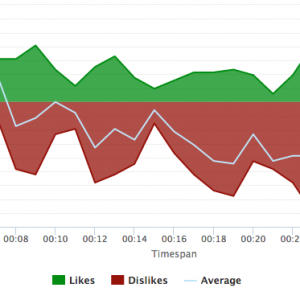Understanding the Benefits of Ad Measurement

In today’s ever-expanding digital landscape, the importance of measuring ad performance cannot be understated. Ad measurement is critical in determining the efficacy of marketing campaigns, improving performance, and maximizing return on investment (ROI). Consequently, identifying key metrics, utilizing appropriate tools and techniques, and overcoming challenges in ad measurement can lead to optimized marketing agility and results.
The Importance of Ad Measurement in Marketing
Marketing efforts and budgets are significant investments in any business, and ad measurement plays a crucial role in identifying areas for improvement and enhancing campaign performance. Successful ad measurement enables marketers to refine their strategies and better target audiences, increasing the likelihood of success and improving campaign efficiency.
Enhancing Campaign Performance
Ad measurement assists in identifying which ads are successful, and which require adjustment or elimination. This allows for optimization of campaign performance, identifying trends, and utilizing insights to improve future campaigns.
For example, if a marketing team notices that a particular ad is not performing well, they can assess the ad’s copy, visuals, and targeting. They can then make changes to improve the ad’s performance, such as adjusting the copy to be more compelling or changing the target audience to better reflect the ideal customer.
Additionally, ad measurement can help marketers identify which channels are most effective for their campaigns. By analyzing the performance of ads across different channels, such as social media, email, or search, marketers can determine where to allocate their budgets for maximum impact.
Maximizing Return on Investment (ROI)
The ability to measure the ROI of ad spend allows companies to allocate their budgets effectively. By determining which ads perform better for specific audiences, companies can optimize their ad budget, ensuring maximum ROI and profitability.
For instance, if a company is spending a significant amount of their budget on social media ads, but they are not generating a high ROI, they may decide to shift their budget to other channels, such as email or search, that are generating a higher ROI.
Identifying Target Audiences
Ad measurement can help identify and hone in on target audiences. Analyzing qualification metrics (such as demographics) for individual ad campaigns can provide invaluable information to marketing teams, refining their understanding of ideal customers and helping to create better-targeted campaigns.
For example, if a company is selling a product that is primarily used by women between the ages of 25-35, they can use ad measurement to determine which ads are resonating with that specific demographic. They can then create more ads that speak directly to that audience, increasing the likelihood of conversions and sales.
Overall, ad measurement is critical to the success of any marketing campaign. By analyzing performance, optimizing campaigns, and refining target audiences, marketers can ensure they are making the most of their advertising budget and driving business growth.
Key Metrics for Effective Ad Measurement
It’s critical to understand key metrics when measuring ad performance. Analyzing these metrics can provide insight into campaign success and potential areas for improvement. Here are some key metrics to consider:
Click-Through Rate (CTR)
CTR measures the success of an ad by determining what percentage of clicks it generates compared to impressions or views. It’s a valuable metric for assessing the effectiveness of an ad in terms of generating interest and engagement from potential customers.
For example, if an ad has 100 impressions and 10 clicks, the CTR would be 10%. A higher CTR indicates that the ad is resonating with the target audience and driving more clicks.
Conversion Rate
The rate at which visitors to a website convert, either by filling out a form or making a purchase, is the conversion rate. This metric indicates whether an ad is driving the desired action by potential customers.
For example, if an ad generates 100 clicks and 10 of those clicks result in a purchase, the conversion rate would be 10%. A higher conversion rate indicates that the ad is effectively driving sales or leads.
It’s important to note that conversion rate can be influenced by factors beyond the ad itself, such as website design and user experience. However, analyzing conversion rate in conjunction with other metrics can provide valuable insights into overall campaign performance.
Cost per Acquisition (CPA)
The total amount spent to acquire a single customer, when divided by the number of customers acquired, determines the CPA. Reducing CPA can lead to a reduction in cost per sale or lead generated by an ad.
For example, if an ad campaign costs $1000 and generates 10 customers, the CPA would be $100. A lower CPA indicates that the ad is generating more customers for less money, making it more cost-effective.
Reducing CPA can be achieved by optimizing ad targeting, improving ad creative, and refining landing pages to improve conversion rate. Continuously monitoring and adjusting CPA can lead to more efficient and effective ad campaigns.
Return on Ad Spend (ROAS)
ROAS is calculated by dividing the amount earned from an ad campaign by the amount spent. It’s a useful metric for assessing campaign profitability and deciding whether to continue or adjust campaign spend and strategy.
For example, if an ad campaign costs $1000 and generates $2000 in revenue, the ROAS would be 200%. A higher ROAS indicates that the ad campaign is generating more revenue than it costs to run, making it profitable.
ROAS can be improved by optimizing ad targeting, improving ad creative, and refining landing pages to improve conversion rate. Continuously monitoring and adjusting ROAS can lead to more profitable ad campaigns.
Tools and Techniques for Ad Measurement
There are several tools and techniques available for ad measurement. Depending on a company’s resources and needs, different platforms or methods may be applicable.
Web Analytics Platforms
Web analytics tools, such as Google Analytics, allow for deep dives into ad performance, from identifying sources of traffic to evaluating engagement and conversion rate on pages where ads appear.
With web analytics platforms, businesses can track the entire customer journey, from the moment a user clicks on an ad to the point of conversion. This allows for a comprehensive understanding of how ads are driving traffic and sales, as well as identifying areas for improvement.
Additionally, web analytics platforms can provide insights into user behavior, such as how long they spend on a page, which pages they visit, and which devices and browsers they use. This information can help businesses optimize their ads for specific audiences and improve overall user experience.
Ad Tracking Software
Ad tracking software can provide detailed information about the success of individual ads, which can then be compared and analyzed over time.
With ad tracking software, businesses can monitor ad performance in real-time, allowing them to make adjustments on the fly. This can include changing ad copy or images, adjusting targeting parameters, or even pausing underperforming ads altogether.
Ad tracking software can also provide insights into which ad placements are most effective, such as which websites or social media platforms drive the most clicks and conversions.
Ad Testing and Optimization Software
Ad measurement software like Spot Trender can provide even more in depth information about not only how the ads will most likely perform in the market, but understand the why behind consumer perceptions. Ad measurement software has advanced to where you can gain real-time audience emotional reactions to ads, and leverage AI tools to analyze how you can improve those ads down to the second if it is in video format, or what elements, characters, or music may be positively or negatively impacting your other marketing content.
A/B Testing and Multivariate Testing
By randomizing different components of an ad (such as headlines or images), A/B testing and multivariate testing can provide insights into which versions of an ad perform best for specific audiences.
A/B testing involves creating two versions of an ad, with one variable changed between the two (such as a different headline or call-to-action). The two versions are then shown to different groups of users, and the results are compared to determine which version performs better.
Multivariate testing takes this a step further by testing multiple variables at once. This can provide even deeper insights into which combinations of variables work best for specific audiences.
Both A/B and multivariate testing can help businesses optimize their ads for maximum performance, and can also provide insights into which ad elements resonate most with their target audience.
Overcoming Challenges in Ad Measurement
Ad measurement is a crucial component of any successful advertising campaign. However, it’s not always fool-proof or without pitfalls. In fact, there are several common challenges that organizations must overcome to create a more effective ad measurement strategy.
One of the biggest challenges in ad measurement is ad fraud. From click fraud to impression fraud, fraudulent activity can significantly skew ad tracking data. To combat this, organizations must put measures in place to minimize fraudulent activity and partner with trustworthy platforms. This can help mitigate the impact of ad fraud and ensure that ad measurement data is accurate and reliable.
Dealing with Ad Fraud
Ad fraud is a pervasive problem in the advertising industry. It can take many forms, from click fraud to impression fraud. Click fraud occurs when bots or automated scripts click on ads, artificially inflating the number of clicks and impressions. Impression fraud occurs when ads are displayed to bots or fake websites, rather than real users. This can lead to inaccurate ad tracking data, making it difficult for organizations to measure the effectiveness of their advertising campaigns.
To combat ad fraud, organizations must put measures in place to minimize fraudulent activity. This can include using fraud detection software, partnering with trustworthy platforms, and implementing strict ad verification processes. By taking these steps, organizations can ensure that their ad measurement data is accurate and reliable.
Navigating Privacy Regulations
As privacy regulations continue to evolve, companies must adhere to regulations such as GDPR and CCPA. These regulations require organizations to obtain user consent before collecting and processing their data. They also require organizations to provide users with the ability to opt-out of data collection and processing.
To navigate these regulations, organizations must implement thorough data protection policies and partner with reputable vendors. This can help ensure that user data is collected and processed in a compliant manner, minimizing the risk of regulatory fines and legal action.
Ensuring Data Accuracy and Consistency
Without accurately tracked and consistent data, ad measurement is essentially useless. Inaccurate data can lead to incorrect conclusions about the effectiveness of advertising campaigns, which can result in wasted resources and lost revenue.
To ensure data accuracy and consistency, organizations must create a solid data tracking plan and rigorously adhere to it. This can include setting up clear data collection processes, using reliable tracking tools, and regularly auditing data to identify and correct any discrepancies. By taking these steps, organizations can ensure that their ad measurement data is accurate, reliable, and consistent over time.
Conclusion
Ad measurement plays a critical role in creating optimal marketing campaigns and maximizing ROI. By focusing on key metrics, utilizing appropriate tools and techniques, and anticipating and mitigating common issues, organizations can create more effective ad measurement strategies to better target audiences and drive campaign success.







